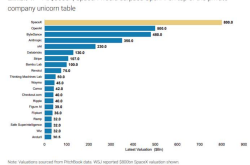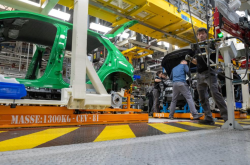Is More Cores Always Better? A Performance Showdown Between Ryzen 5 8600G and Core i5-14500
![]() 08/07 2025
08/07 2025
![]() 668
668
I. Introduction: The Complexity of Modern Business PC Processors
Times have evolved, and modern office work has transcended the basic realm of using Office suites. Tasks like image design rendering, video editing, network communication, data processing, and analysis are on the rise.
Hence, when purchasing a computer, it's essential to not only cater to text-based office needs but also enhance creative efficiency.
AMD's Ryzen 5 8600G and Intel's Core i5-14500 processors are widely used in cost-effective OEM business PCs, making them standout choices. So, which of these two processors better meets the demands of modern office work?
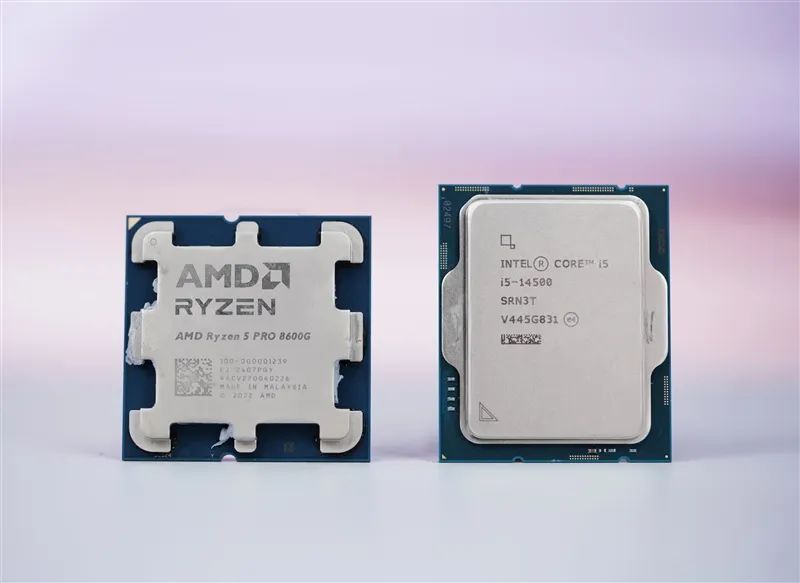
We have the Lenovo Qitian M550 business desktop equipped with the Ryzen 5 8600G and another desktop with the Core i5-14500. Both processors operate at 65W, so let's dive into which one excels in office tasks.
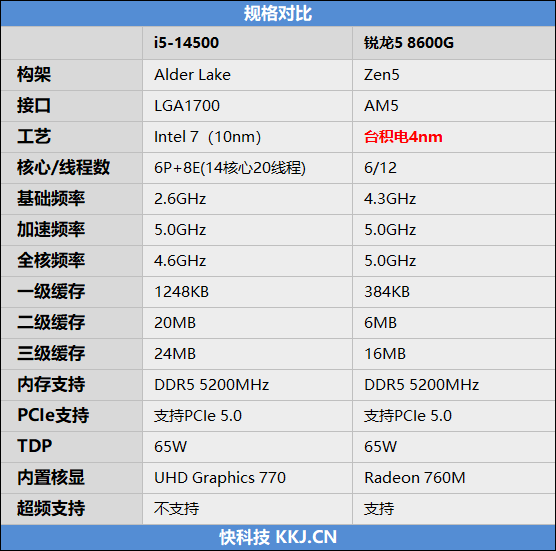
On paper, the i5-14500 boasts a comprehensive edge with 6P-Core + 8E-Core, totaling 14 cores and 20 threads, while the Ryzen 5 8600G has 6 cores and 12 threads.
However, a crucial aspect to consider is the difference in their manufacturing processes. The i5-14500 employs Intel 7 (actually 10nm), whereas the Ryzen 5 8600G uses TSMC's 4nm process, over two generations ahead.
A more advanced manufacturing process translates to higher energy efficiency. Despite both having a TDP of 65W, their base frequencies vary significantly. The i5-14500 operates at 2.6GHz, while the Ryzen 5 8600G reaches 4.3GHz, 65% higher.
The base frequency signifies the processor's performance under full load with all cores at the default TDP. Thus, with 65W power consumption, the Ryzen 5 8600G's multi-core performance might not lag behind the i5-14500.
Nowadays, productivity applications increasingly support GPU acceleration, underscoring the importance of integrated GPU performance.
The Ryzen 5 8600G features the Radeon 760M GPU, based on RDNA 3 with 8 compute units, totaling 512 stream processors at 2800MHz. In contrast, the i5-14500 uses the Intel UHD 770 GPU with 32 EU units, each EU containing 8 Shader Cores, equivalent to 256 stream processors at 1.55GHz.
Both in GPU frequency and stream processor count, the Ryzen 5 8600G is clearly superior.
II. Lenovo M550 Desktop Overview
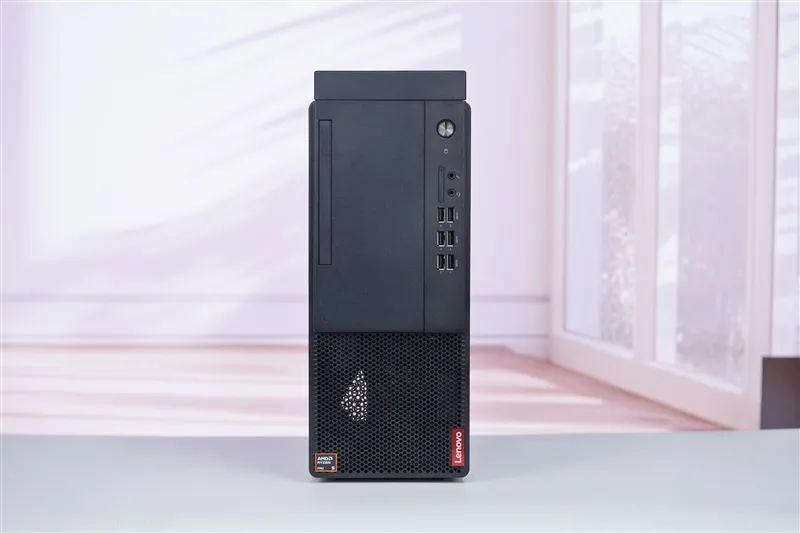
It sports a classic business design with a steady black tone and no flashy elements. The bottom is ventilated for better airflow.
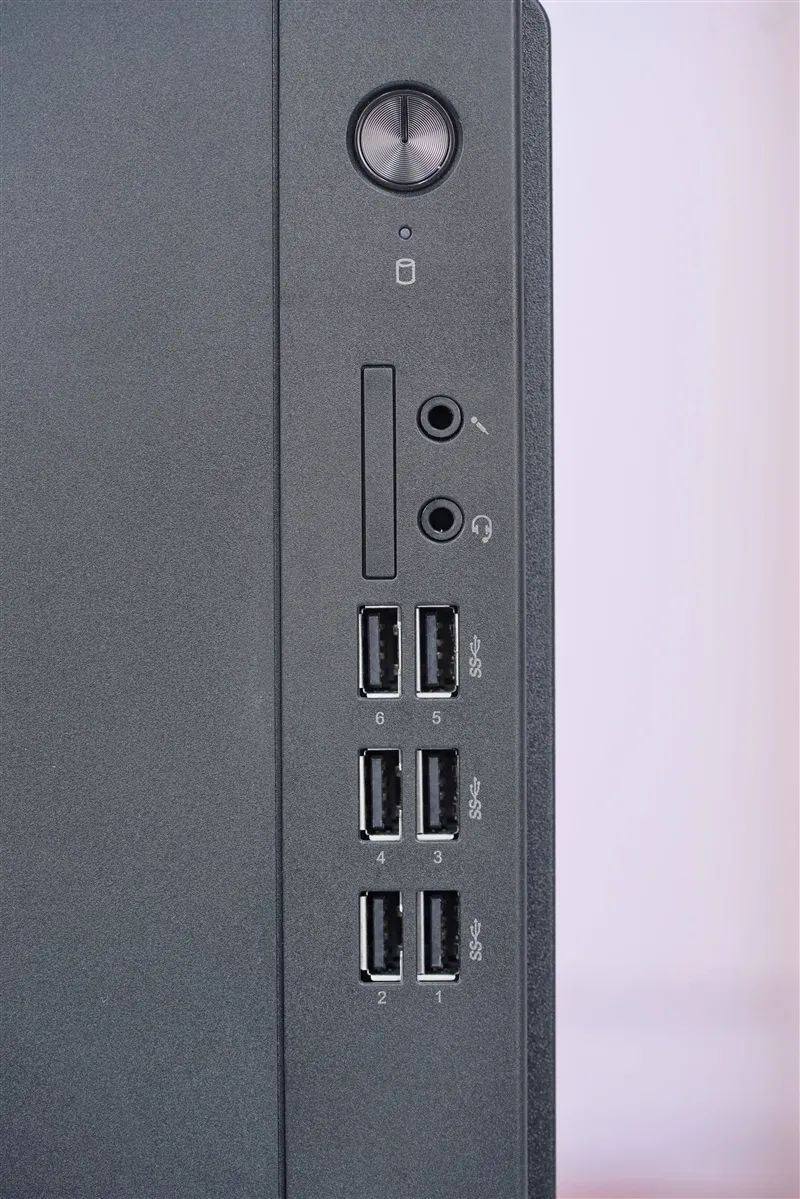
The front I/O interfaces include 2 3.5mm audio ports and up to 6 USB 3.0 ports.
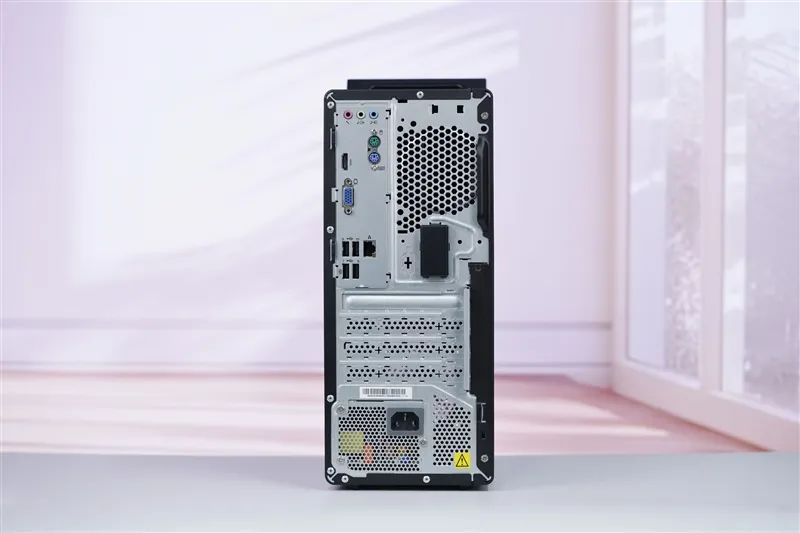
The rear I/O interfaces comprise 3x3.5mm audio ports, HDMI decoupling, 2xPS/2 ports, VGA port, 4xUSB 3.0, and an RJ-45 port.
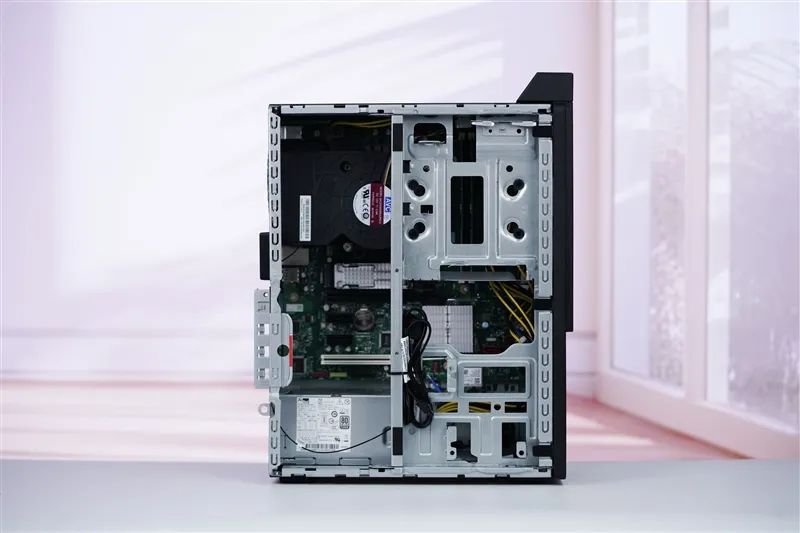
Removing the side panel reveals the internal layout of the chassis.

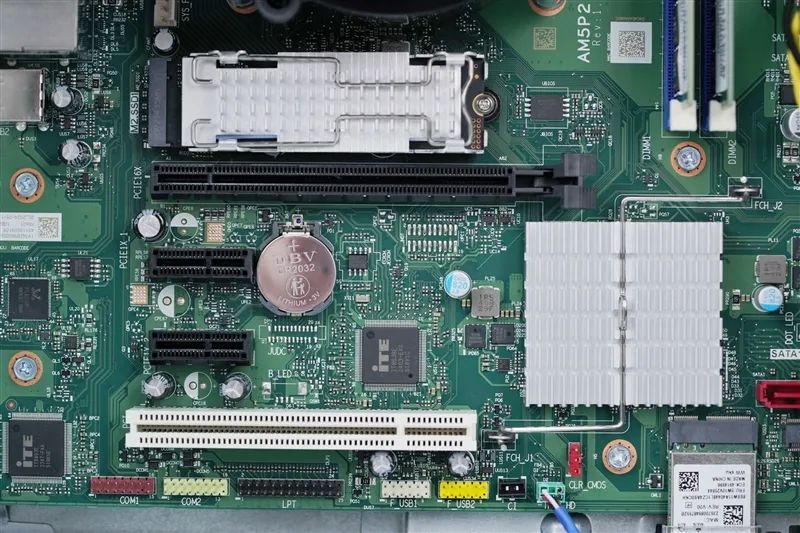
It boasts 2 M.2 2280 interfaces, 1 PCIe x16, 2 PCIe x1 slots, and even a white PCI slot.
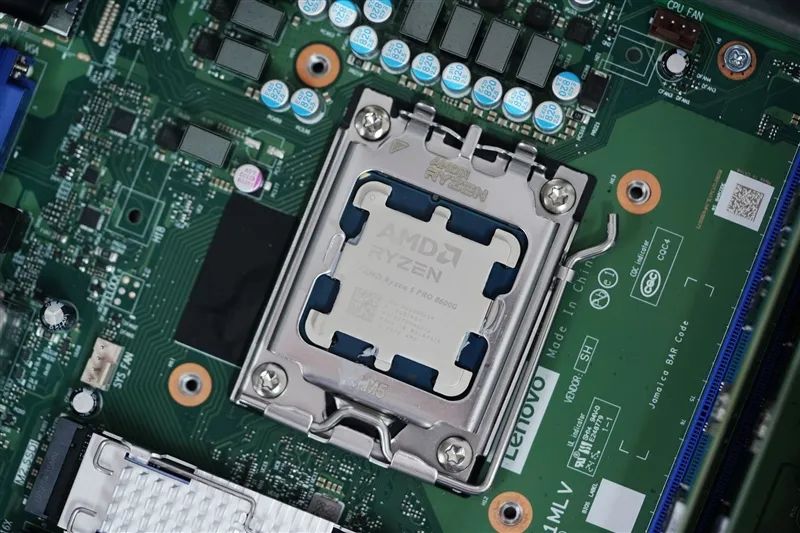
Ryzen 5 8600G processor.
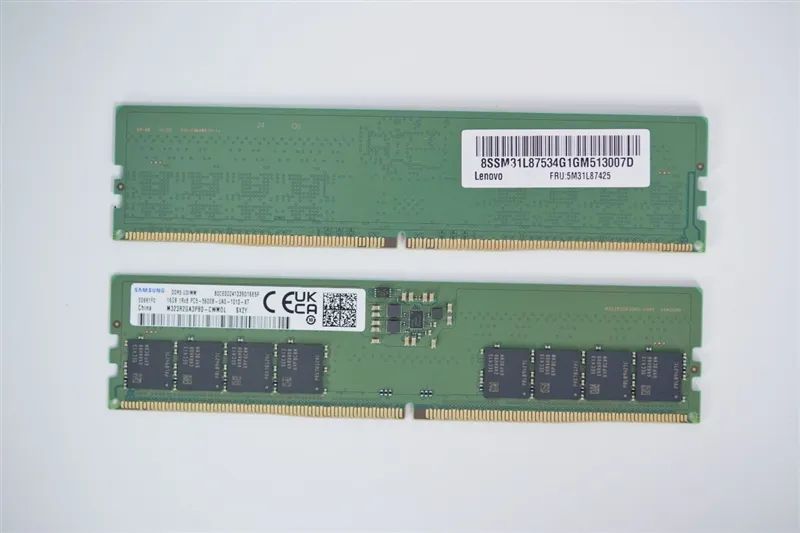
Two 16GB DDR5 5600MHz memory modules, operating at 5200MHz.
III. Comprehensive Performance Comparison
1. CineBench R23
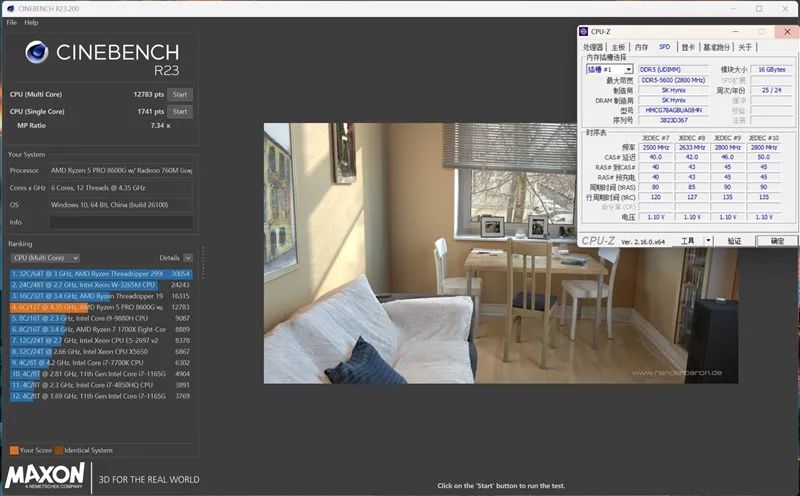
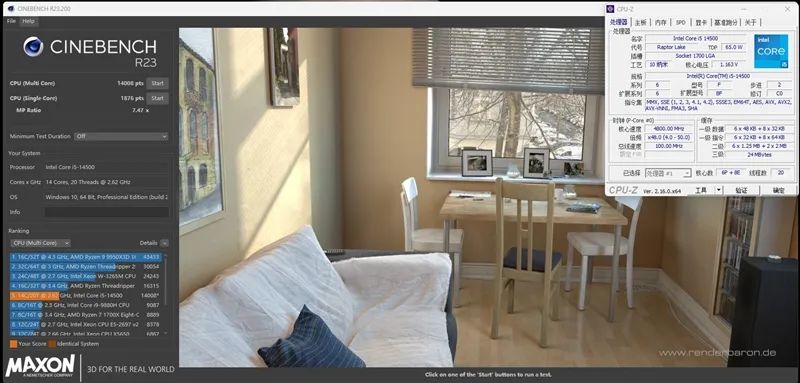
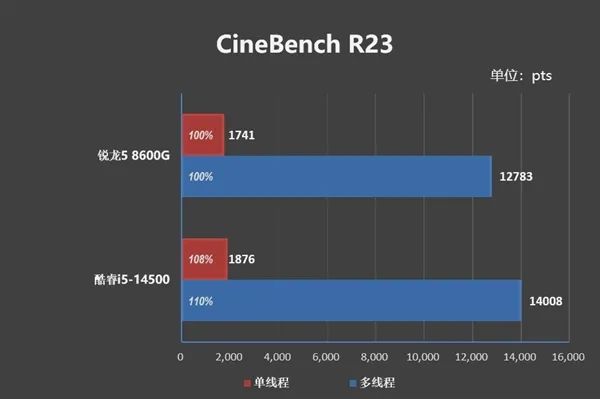
2. 3DMark
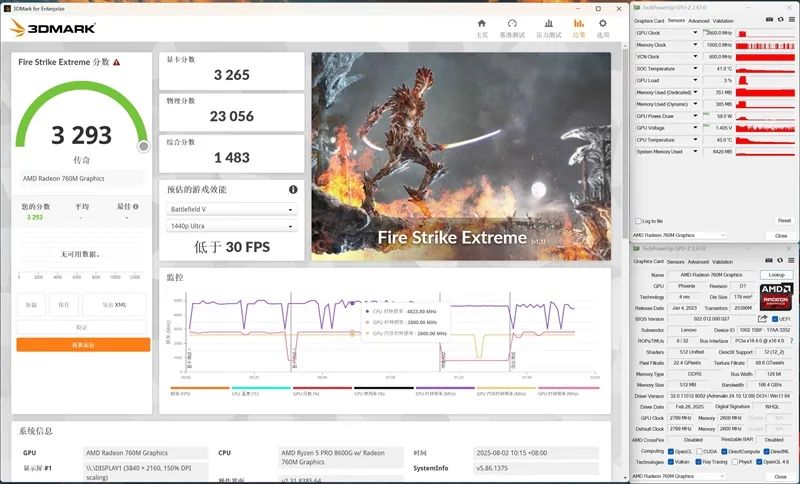
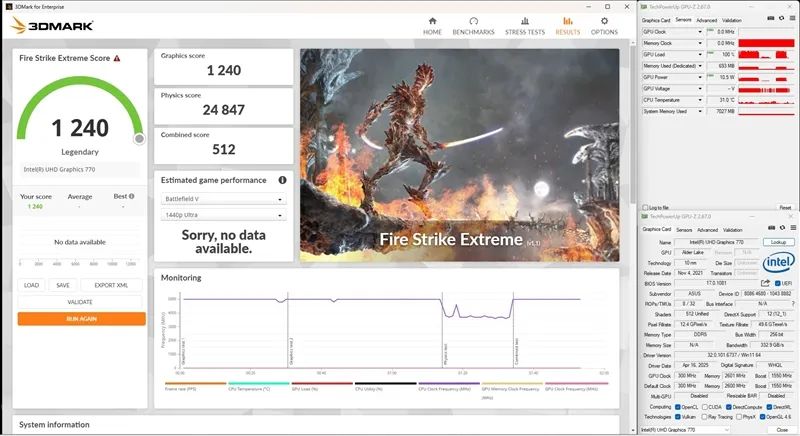
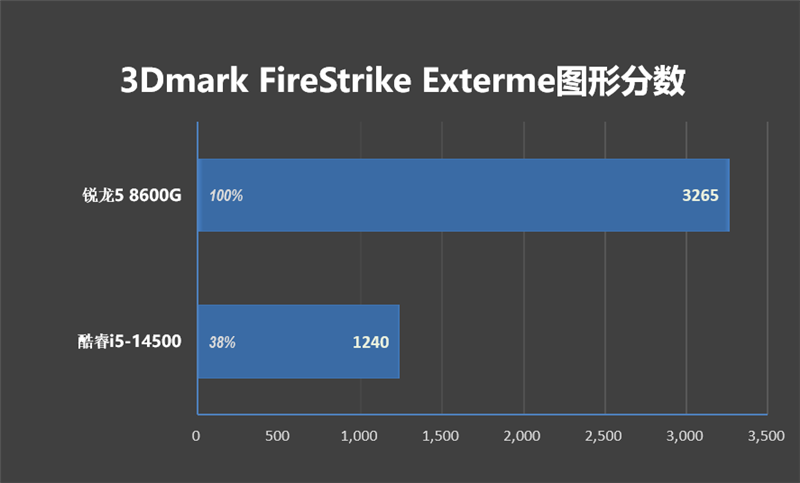
3. PugetBench for Premiere Pro
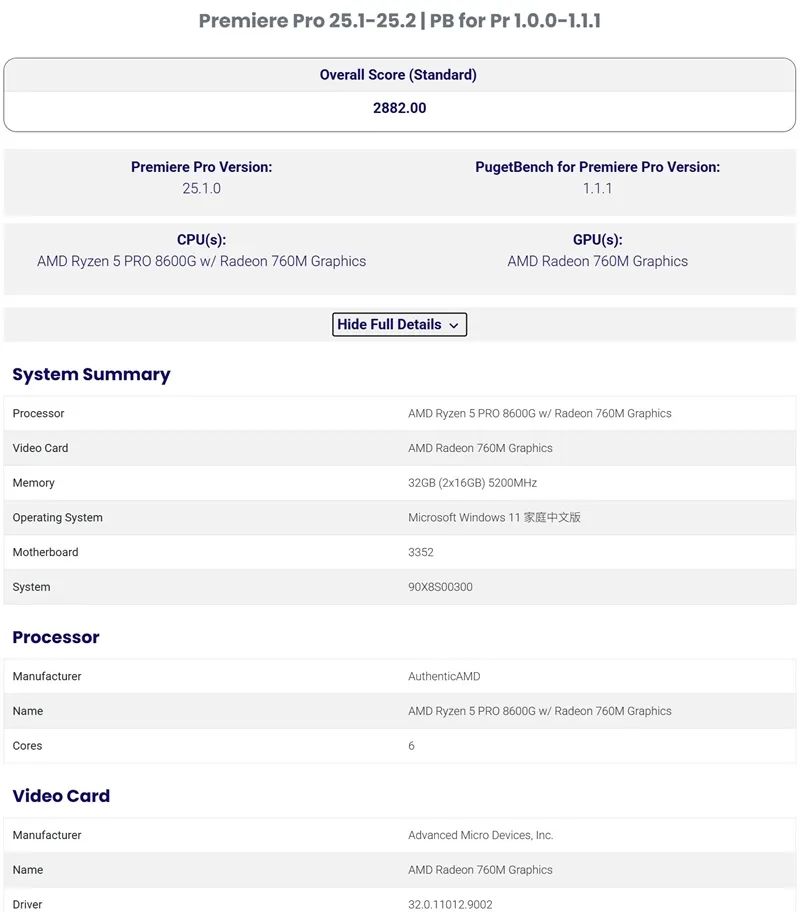
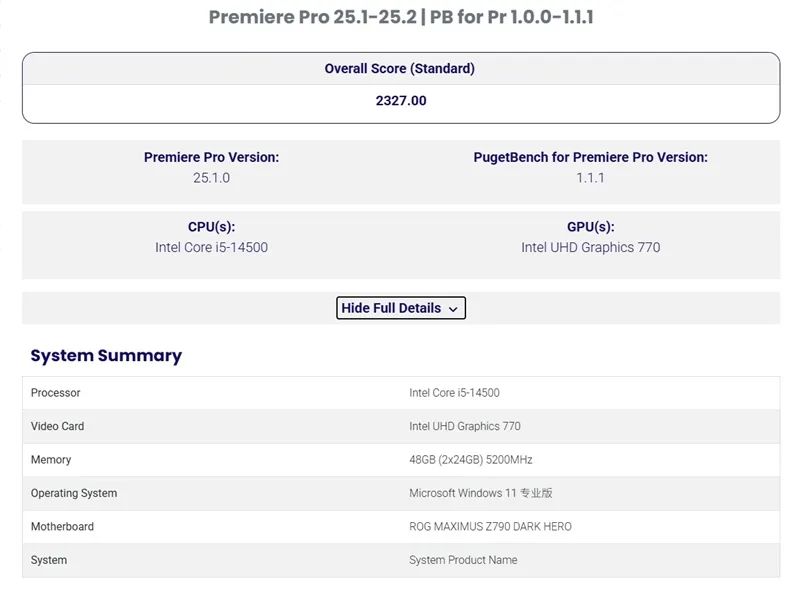
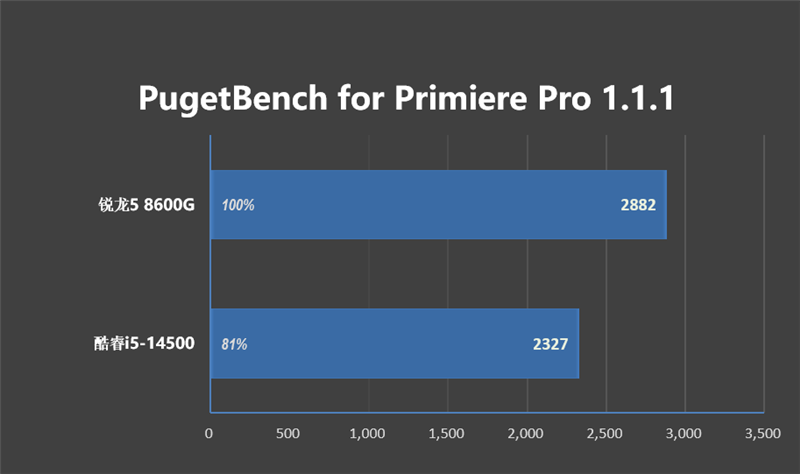
4. PugetBench for Photoshop
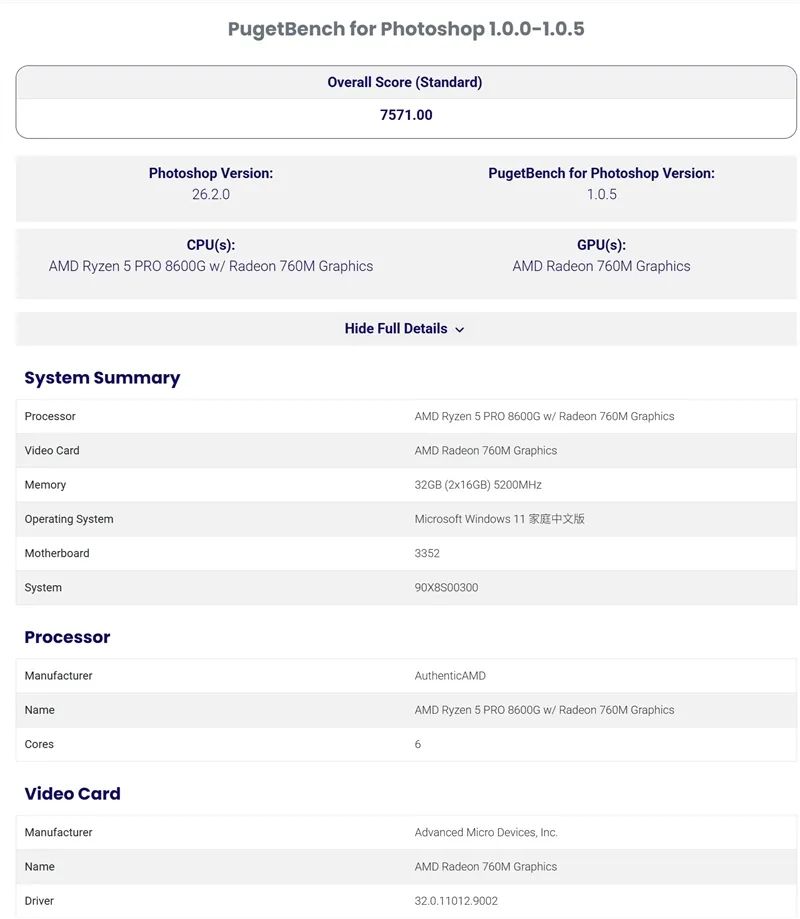
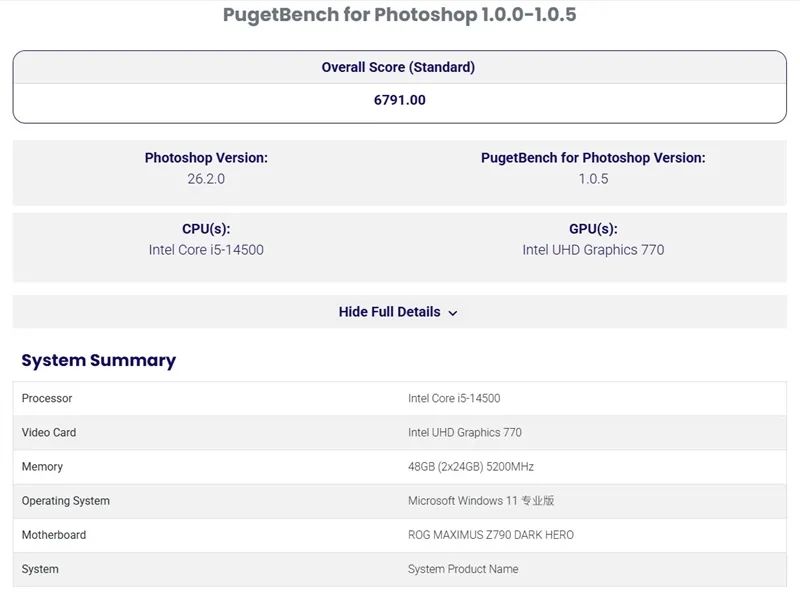
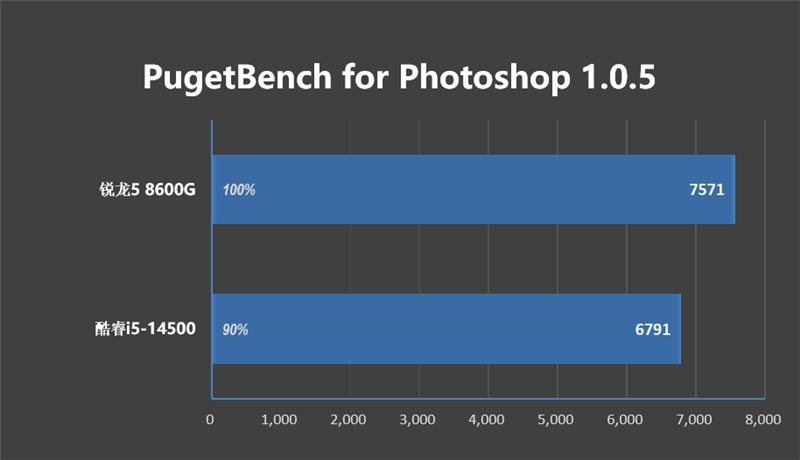
5. Video Editing Benchmark
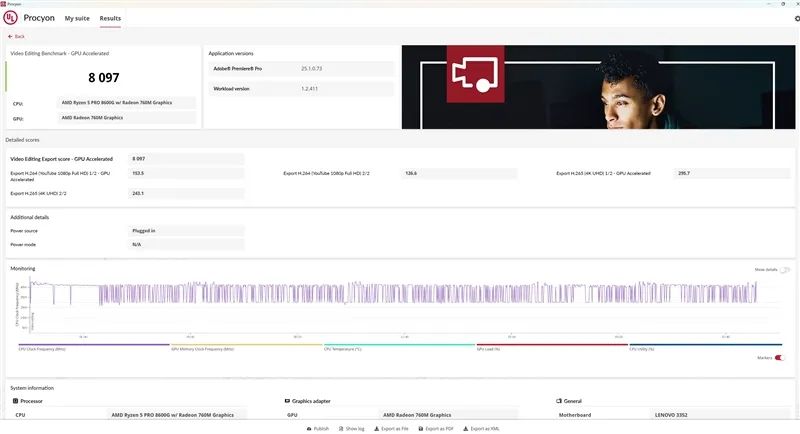
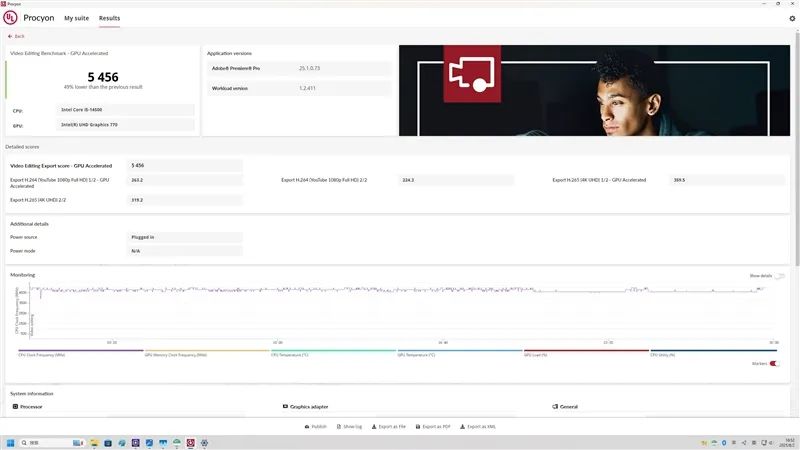
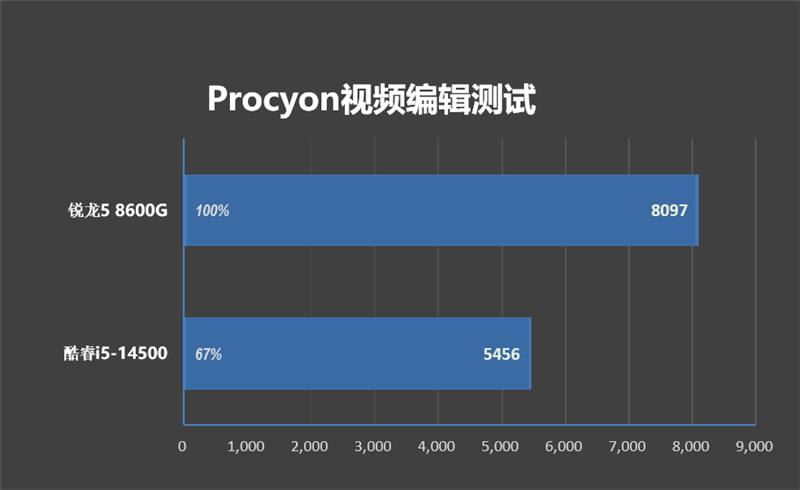
6. Photo Editing Benchmark
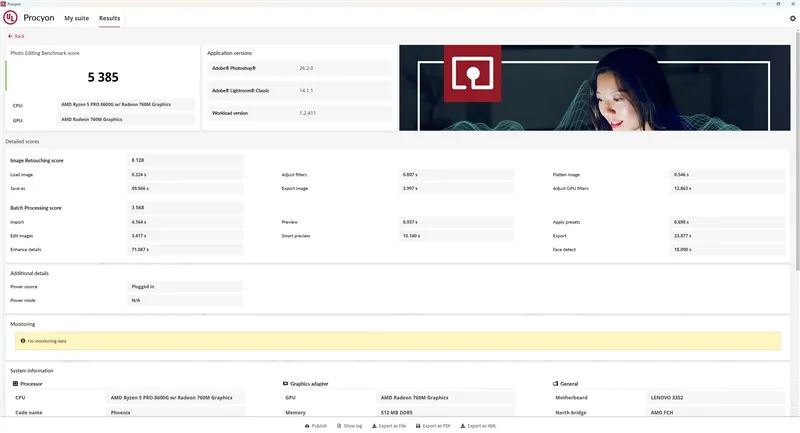
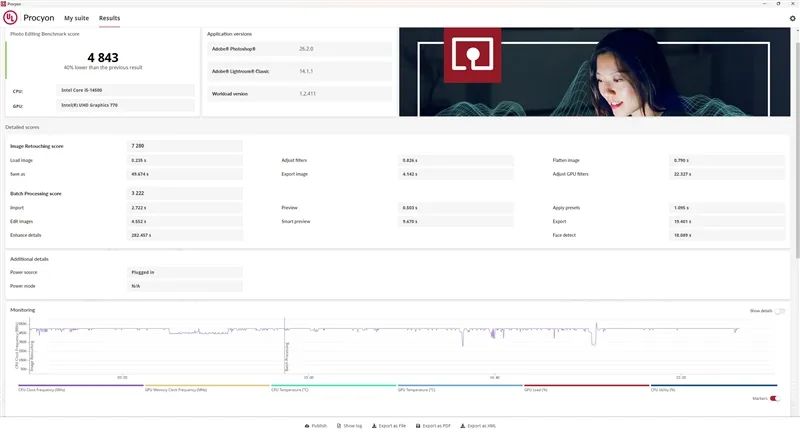
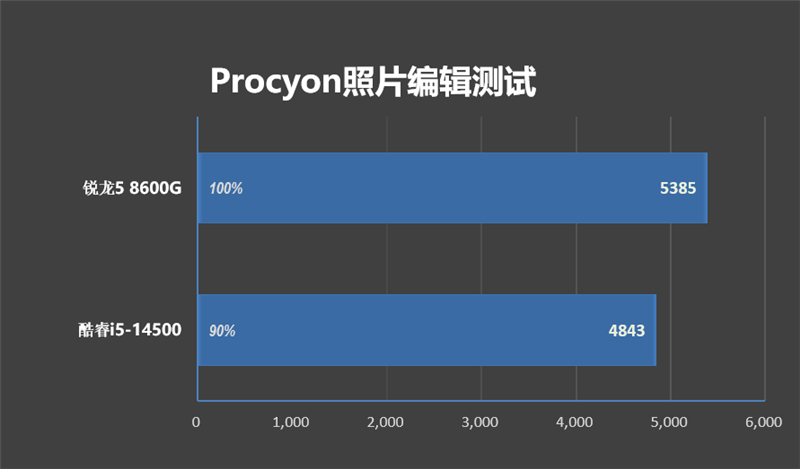
7. PCMark 10 Extended
PCMark 10 Extended, a benchmarking tool by Futuremark, assesses video conferencing, office applications, photo/video editing, gaming performance, and more.
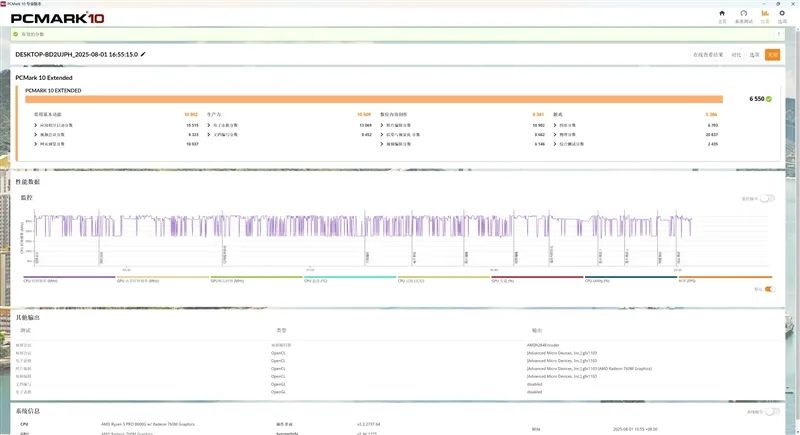
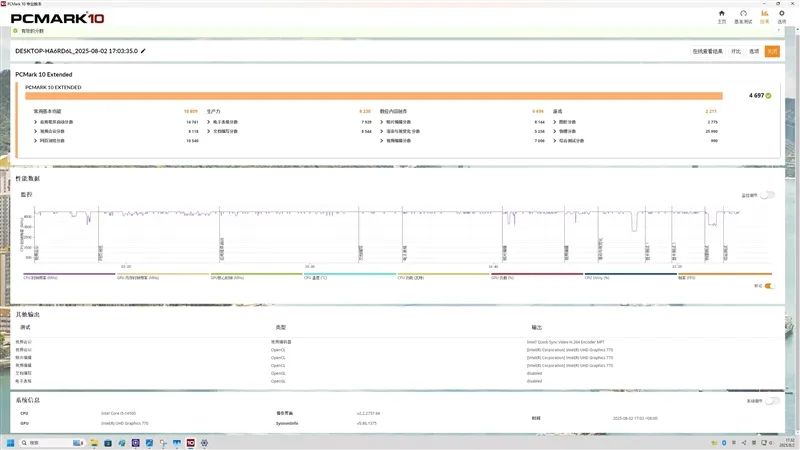
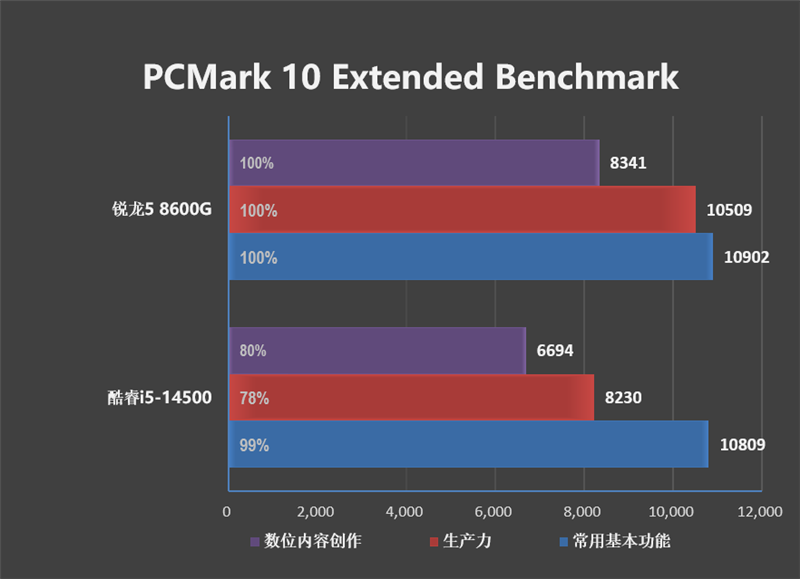
Summarizing the test data:
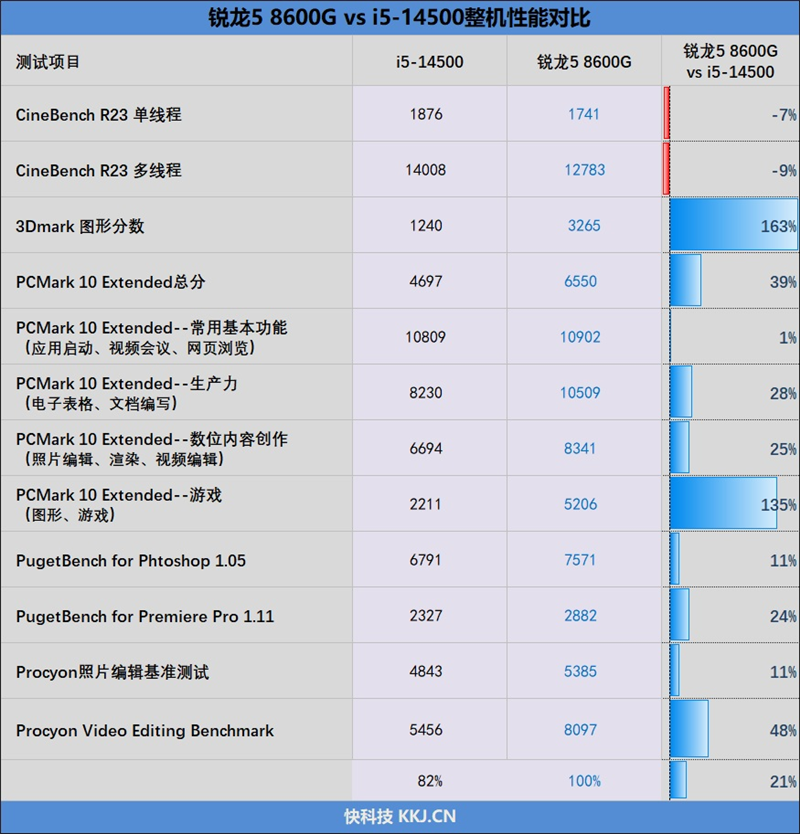
Considering all scores, the Ryzen 5 8600G only lagged behind the i5-14500 in Cinebench R23, with a minor gap.
In commercial performance, productivity, web browsing, and video creation, the Ryzen 5 8600G outperformed its rival.
V. Conclusion
The results are as anticipated!
Despite having more cores, under the common 65W power consumption in OEM business machines, the i5-14500 was merely 10% stronger than the Ryzen 5 8600G in CineBench R23, a test fully leveraging multi-core performance.
However, in other tests, the Ryzen 5 8600G emerged victorious. In PCMark 10 Extended for productivity and digital content creation, it was 28% and 25% stronger, respectively.
In Premiere Pro and Procyon Video Editing Benchmarks, the Ryzen 5 8600G was 24% and 48% more powerful.
Thus, judging processor performance solely by core and thread count is misleading.
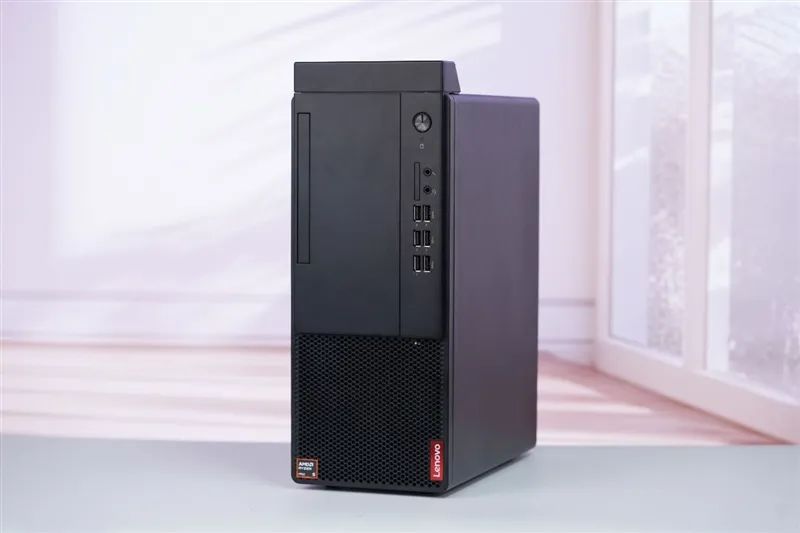
Regarding integrated graphics, in 3Dmark FireStrike Extreme and PCMark 10 3D tests, the Ryzen 5 8600G scored 150% higher, with the i5-14500's 3D performance barely noticeable.
Stronger GPU performance not only ensures higher game frame rates but also significantly boosts efficiency in AI, video editing, and exporting tasks requiring GPU acceleration.
To enhance graphics, the i5-14500 would need a dedicated GPU, significantly increasing power consumption and budget.
In the realm of high-stability, value-oriented commercial machines, AMD's Ryzen 8000G series processors excel. Intel must continue to innovate.
The Ryzen 8000G series can be considered N-0.5 generation products. From process to architecture, CPU to GPU to NPU, they stand out with remarkable energy efficiency and cost control, making them the best choice for OEM commercial use. Even facing future challenges and heightened performance demands, they ensure a longer lifespan.
We eagerly await AMD's future commercial desktop processor offerings!

